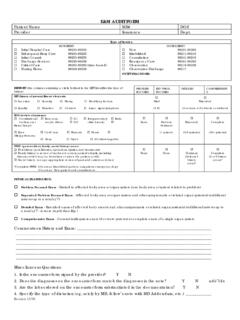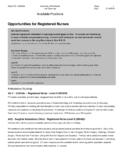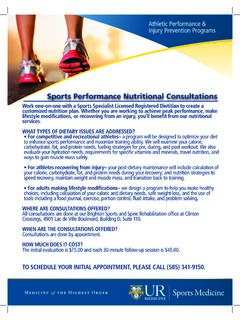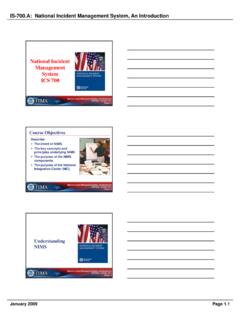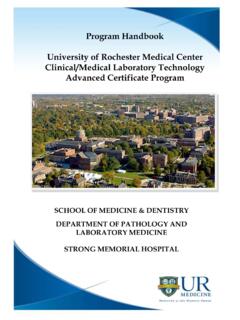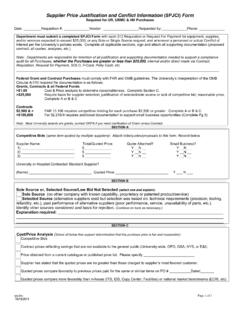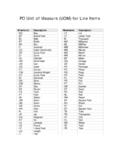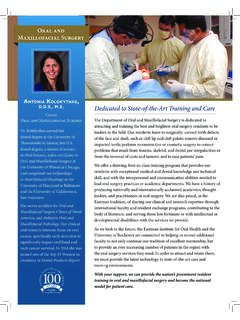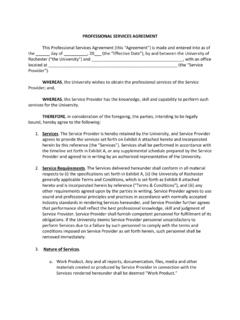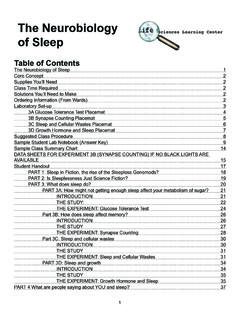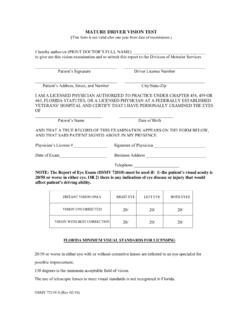Transcription of Steps to checking vision using Snellen eye chart
1 What is visual acuity and what does 20/20 vision mean? Visual acuity (VA) is commonly referred to as the sharpness of vision , measured by the ability to discern letters or numbers at a given distance according to a fixed standard. 20/20 vision is considered "normal" vision , meaning you can read at 20 feet a letter that most people should be able to read at 20 feet. If a patient reads the 20/200 line that means they can read at 20 feet the letters that people with "normal" vision can read at 200 feet. So at 20/200, your visual acuity is very poor. Steps to checking vision using Snellen eye chart 1. Have patient stand at appropriate marking on floor. 2. If patient has glasses make sure they are wearing the proper glasses for distance vision .
2 3. Give patient occluder and have them cover the eye not being tested. 4. Have patient read the smallest line they can see on the chart 5. If patient reads all 5 letters correctly and there are more lines below then ask them to try the next line. 6. Repeat Steps for opposite eye. How to record vision If the patient reads all the letters on the 20/30 line you would record their vision as 20/30. If the patient is reading the 20/30 line and reads 3 out of the 5 letters correctly you would record that vision as 20/30-2. If the patient is reading the 20/30 line and reads all the letters correctly and then reads 2 letters of the next line correct their vision would be 20/30+2.
3 You can use that notation with any line of vision no matter what the number of letters are. using a pinhole occluder If the patient can t see any better than 20/40 try using the pinhole technique. This technique helps to focus the light and removes the effects of refractive errors such as myopia. using the occluder put the pinhole flap over the opening and have the patient wiggle the occluder back and forth until they find a hold that makes it look clearer for them. Then have the patient read the next clearest line of vision that they can see. Record the vision as PH: 20/___. patients with poor vision less than 20/400 If the patient can t read the largest letter on the chart , stand in front of the chart and move your hand side to side and ask the patient if they can see your hand moving.
4 If they respond yes hold up a number of fingers and ask them how many fingers you are holding up. If they can t see how many fingers move closer until they can. Record their vision as CF (Count Fingers) at ____ft. o Ex.) If you are 3 ft in front of the patient and they can count your fingers record that as CF @ 3 . o EX.) If they can t see your fingers moving at 1 ft in front of their face, but can see hand motion as you get closer to their face, record that as HM (Hand Motion) @ face.
